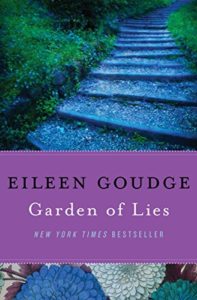I was in my thirties and new to publishing. I’d landed the plum assignment of writing for a yet-to-be-published YA series as one of the handful of writers-for-hire selected to help launch it. Though thrilled at the prospect, I was pretty much flying by the seat of my pants.
The Sweet Valley High series went on to become a worldwide phenomenon with hundreds of titles over the course of its long run. I’m proud to say I penned six of the first dozen titles before going on to create my own teen series, Seniors, and fulfill my dream of writing women’s fiction.
What did it get out of it besides a nice chunk of change? Everything I needed to know, as it turned out.
That dirty little secret
Because, you see, by writing YA fiction I learned the “dirty little secret” to writing adult fiction.
We adults read for a variety of reasons. Because someone we trust recommended a book or it was well-reviewed. Because we paid for it and are determined to get our money’s worth, dammit. Or the writing itself is so gorgeous, we forgive a plot that lags.
We may give up after 50-100 pages if it fails to spark our interest, but we hang in there for a good long while.
Kids not so much.
If you haven’t hooked a young reader by the first page, you’ve lost them.
Unless it’s required reading in school, kids read for one reason alone: If a book grabs their interest.
How, then, do you hook the fickle reader?
Start with these 3 rules
1. Begin with an emotional punch
Too many novels get off on the wrong foot by front-loading their novel with narrative in the form of backstory and/or flashbacks. You’re far more likely to hook a reader by plunging them into the action with a scene that has him or her actively engaged.
My first adult novel, the New York Times bestselling Garden of Lies, opens with my protagonist Sylvie going into labor in a department store. She’s terrified of her husband finding out the child she’s about to bear isn’t his, so she has the taxi driver take her to a hospital in her old neighborhood in the Bronx. In Chapter One I weave in just enough backstory to give the reader a sense of why she’s in this pickle and a bit about the father of the baby without slowing the action.
In the first draft I explained everything in a lengthy flashback, which ended up on the cutting-room floor by the final draft, and quite rightly.
Does this mean opening your novel like in those old movie serials with the damsel in distress tied to the railroad tracks with the train screaming toward her?
Not necessarily.
I always start with a compelling character who’s in a sticky situation or facing a dilemma or a crisis. If they’re in danger, it doesn’t have to be the kind that has them at gunpoint or running for their life. It could be a looming financial or career crisis or a gravely ill loved one who’s at risk of dying.
The only MUST is that we care enough about the character to keep reading. Which brings me to my next point.
2. Create a compelling protagonist
How do you create a compelling protagonist? I can’t answer that—the process is as unique as your voice as a writer.
But I can warn you about one major pitfall: Beware of introducing your protagonist in a scene with multiple characters. It can be done and done well, but if not deftly handled, you run the risk of the reader confusing characters with whom they have yet to become familiar or of bogging down the action.
If you choose to open with a scene that involves more than one character, concentrate on capturing reader interest by introducing your main character as you might introduce a fascinating guest a dinner party you’re hosting: by letting him or her shine.
3. End every chapter with a compelling moment
Your goal as a writer is to hook the reader and keep them turning those pages. I know I’m hooked when I’ve promised my husband “Lights out when I get to the end of this chapter,” when we’re reading in bed at night, and I get to the end and I can’t stop.
The prologue of Garden of Lies ends with Sylvie, after she’s given birth to her lover’s child and narrowly escaped a hospital fire, claiming another woman’s child as her own so her husband won’t discover she cheated on him. I dare you not to keep reading!
Your cliffhanger doesn’t have to be as dramatic as that. It just has to be compelling enough to…well, compel the reader to turn the page. A good example is Hank Phillippi Ryan’s terrific suspense novel Trust Me. The protagonist, Mercer, an author of true-crime books, is urged by her editor to write a book about a mother on trial for murdering her child. Grieving for her own child and husband who died in a tragic accident, she’s reluctant to accept the assignment. The first chapter ends with her deciding to do so, motivated by her desire to do the dead girl justice. “Rot in hell,” she says about the killer mom. But did she, in fact, kill her child? I found it impossible not to turn the page to see what happens.
Think high stakes. A race against time. Drama that packs an emotional wallop.
Follow these rules and the action in your novel will take off with readers enjoying the ride for no other reason than the sheer thrill of it.
How do you keep readers turning the pages? Tell us what you’ve discovered on the Career Authors Facebook page.

 Eileen Goudge is the New York Times bestselling author of 19 novels, which have sold over 6 million copies worldwide. They include perennial reader favorites Garden of Lies and One Last Dance. She lives in New York City with her husband, entertainment reporter and film critic for WABC-TV.
Eileen Goudge is the New York Times bestselling author of 19 novels, which have sold over 6 million copies worldwide. They include perennial reader favorites Garden of Lies and One Last Dance. She lives in New York City with her husband, entertainment reporter and film critic for WABC-TV.





